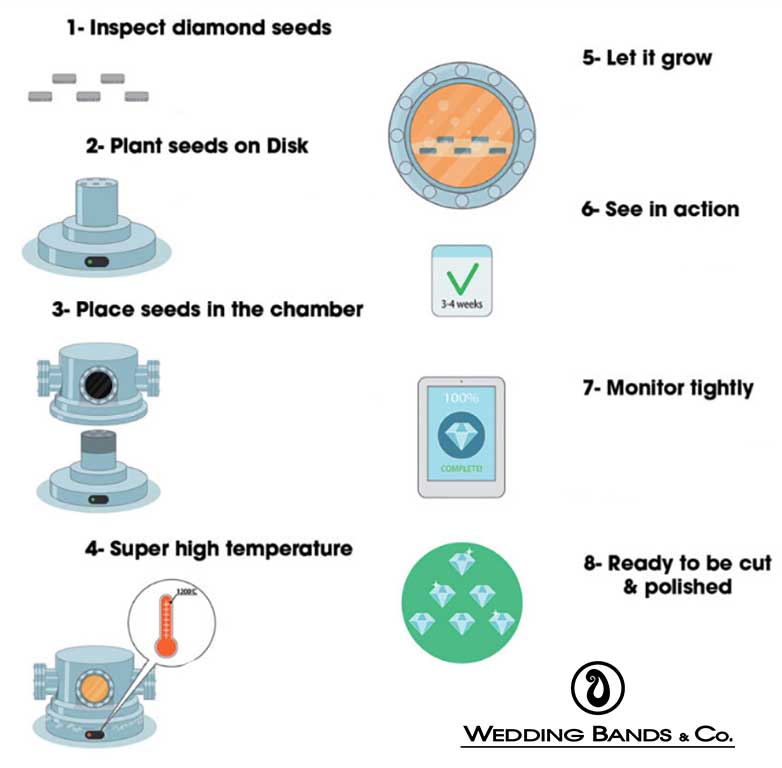Which Lab-Created Diamond is Best?
Posted by Koorosh Daneshgar on Jan 15th 2023

Lab-created diamonds have become increasingly popular in recent years due to their many benefits over natural diamonds. They are virtually identical to natural diamonds in terms of their physical and chemical properties, but are typically less expensive and more ethically sourced. However, when it comes to choosing the best lab-created diamond, there are a few key factors to consider.
One of the most important factors to consider when choosing a lab-created diamond is the method used to create it. There are currently two main methods for creating lab-created diamonds: High Pressure High Temperature (HPHT) and Chemical Vapor Deposition (CVD).
HPHT diamonds are created by mimicking the natural diamond-forming process in a lab. This method involves subjecting a small diamond seed to extremely high pressure and temperature in order to create a diamond crystal. The resulting diamond will be virtually identical to a natural diamond, but will be more affordable and ethically sourced.
CVD diamonds, on the other hand, are created by using a chemical process to deposit carbon atoms onto a substrate to form a diamond crystal. CVD diamonds are typically less expensive than HPHT diamonds, but are also less durable and may be less similar in appearance to natural diamonds.

Another important factor to consider when choosing a lab-created diamond is the quality of the diamond itself. The Four Cs ( carat weight, cut, color, and clarity) are the main factors used to determine the quality of a diamond, and these same factors apply to lab-created diamonds as well.
When it comes to carat weight, lab-created diamonds are typically available in the same range of sizes as natural diamonds. However, it's important to keep in mind that a larger diamond doesn't necessarily mean a better quality diamond.
When it comes to cut, lab-created diamonds are typically cut to the same standards as natural diamonds, with the same range of cuts available. However, a poorly cut diamond can make a diamond appear dull or lifeless, regardless of whether it is natural or lab-created.
When it comes to color, lab-created diamonds are typically colorless, but they can also come in a range of other colors, including yellow, blue, and pink. However, colorless diamonds are considered to be the most valuable, as they are the most similar in appearance to natural diamonds.
When it comes to clarity, lab-created diamonds are typically free of inclusions, but you should always look for a diamond that is certified as having no visible inclusions.
In conclusion, when it comes to choosing the best lab-created diamond, there are a few key factors to consider. The method used to create the diamond, the quality of the diamond itself, and the Four Cs are all important factors to consider. However, it's ultimately up to the individual to decide what is most important to them when it comes to choosing a lab-created diamond.
It is worth noting that lab-created diamonds have the same physical and chemical properties as natural diamonds, but are generally more affordable and ethically sourced. And although lab-created diamonds are cheaper, it's important to look for a diamond that has been certified as having no visible inclusions and is cut and polished to the same standards as natural diamonds. Ultimately, HPHT diamonds are considered to be the best lab-created diamonds because they are virtually identical to natural diamonds and are more durable.
We'll help you to design your dream engagement ring without stress and spending countless hours searching for your perfect ring. All you need to do is click on "Free Consultation" to get started.

